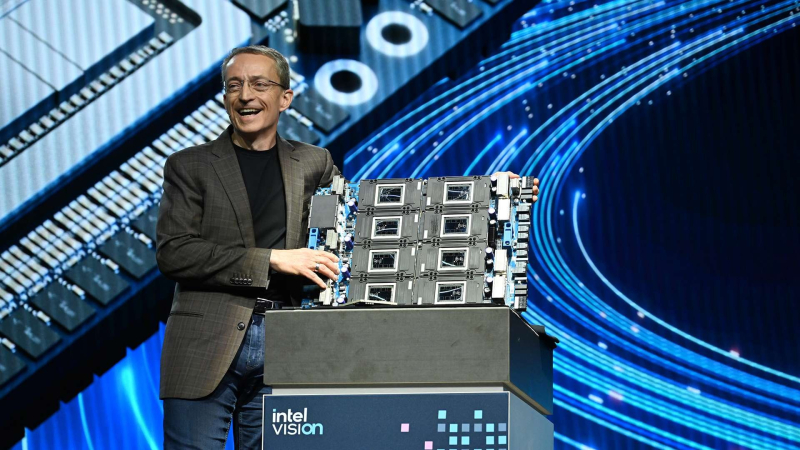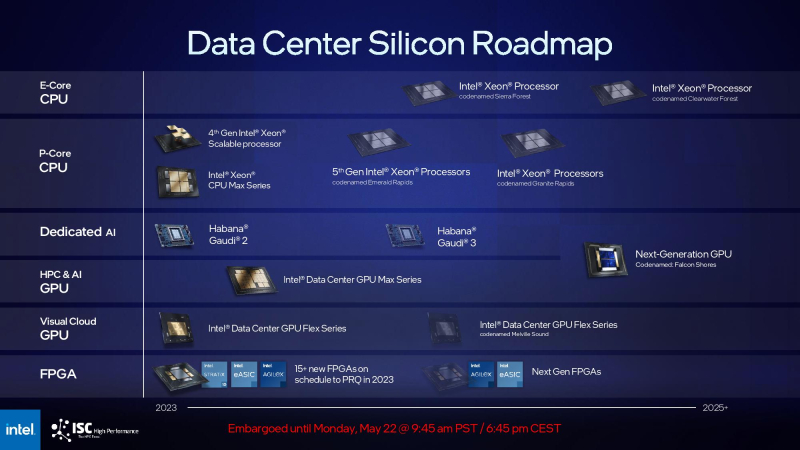At the beginning of the week, Intel sent out a letter to employees describing a plan to overcome the crisis, which casts doubt on the future of Falcon Shores accelerators, previously scheduled for release in 2025, writes the HPCwire resource.
The plan calls for the company to focus on x86-based products, which could impact Falcon Shores production as Intel CEO Pat Gelsinger previously said he would not compete with NVIDIA and AMD in AI training. The next stage of restructuring also includes cutting costs by another $10 billion and laying off 15 thousand employees, of which 7.5 thousand have already agreed to do this on a voluntary basis.
«We must focus on our strong x86 franchise as we execute our AI strategy while optimizing our product portfolio to serve Intel’s customers and partners,” Gelsinger said in the letter. Last month at a Deutsche Bank analyst conference, he said the company was leaving the AI training market to focus on inference, leveraging the strength of x86 chips.

Image Source: Intel
Intel’s desire to cut costs and abandon obsolete products may affect the implementation of the project to release Falcon Shores, an accelerator for data centers, the release of which has been repeatedly postponed. It is the successor to the Intel Ponte Vecchio accelerator (Data Center GPU Max 1550) based on the Xe architecture, the mass production of which was actually discontinued after the commissioning of the Aurora supercomputer. Previously, Intel abandoned the Rialto Bridge series accelerators, and in Falcon Shores it was decided to abandon the hybrid approach, which both AMD and NVIDIA had come to by that time. However, the company does not renounce Gaudi AI accelerators.
Intel did not respond to a request for comment about the future of Falcon Shores. And the main developers involved in this project – Jason McVeigh and Raja Koduri – either left or were appointed to other positions. Gelsinger acknowledged that Intel lags far behind its competitors in GPUs and AI training chips, including NVIDIA, AWS, Google Cloud and AMD. However, for AWS, Intel will produce custom Xeon 6 processors and AI accelerators in the USA (probably the successors of Trainium/Inferentia).

Image Source: Intel
The company also noted a lag in the data center server market, where servers with AI accelerators are now in great demand. “Where we haven’t fully positioned the business is in data center CPUs,” Intel CFO Dave Zinsner said at the Citi Global Technology Conference this month. Xeon Emerald Rapids processors did not live up to the company’s expectations. The usual update cycle for hyperscalers has been significantly extended this time, as they are actively investing in the development of AI infrastructure, while simultaneously increasing the service life of traditional servers.
The next generation of Granite Rapids (Xeon 6) should be released early next year. And Diamond Rapids, which will be produced using Intel’s 18A (1.8 nm) process technology, are expected to help propel Intel to a leading position. Entering production using the 18A process technology using the new RibbonFET transistor structure and PowerVia technology is one of Intel’s priorities. In particular, this process will be used to produce Clearwater Forest server processors. While Intel, under pressure from AMD, is actively losing market share in server CPUs.